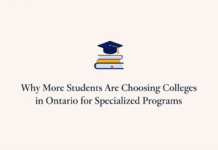
Why do some classrooms feel alive with curiosity while others barely hold students’ attention past roll call? That difference isn’t about the teacher’s charisma (or “swag” or “rizz”, depending on which generation you ask). It’s about structure.
In 2025, the most effective classrooms are engaging classrooms. After all, engagement drives academic achievement, boosts retention, and reduces dropout risk. But what many educators misunderstand about engagement is that it’s not about using more gadgets or making lessons fun (that comes as a natural consequence of good structure). It’s about giving students more ownership and more immediate feedback, while offering guidance, not watering down the content.
What’s making that possible? Smarter tools and more flexible approaches to how, when, and why students interact with material. Notice we said “smarter tools,” not random gadgets. You now have access to tools that adjust in real time, models that promote interaction instead of passive note-taking, and strategies that center feedback as a core part of learning.
Adaptive Technology Is Doing More Than Replacing Chalkboards
You don’t need a smartboard to run a smart classroom. But you do need tools that understand your students as individual learners. In other words, you need adaptive technology that responds to how students think and how quickly they process information.
Tools like Knowt, IXL, or DreamBox are great examples of adaptive tech: they track a learner’s response patterns and then adjust questions or feedback in real time.
According to a RAND Corporation report, personalized learning approaches powered by adaptive tech have led to test score gains of roughly 11 percentile points in math. That’s no small potatoes!
Student Engagement Models Are Getting Smarter and Sharper
Passive listening doesn’t cut it anymore. If your students aren’t interacting, they’re zoning out. The shift is toward active participation: questioning, critiquing, reworking ideas in real time.
Think about Universal Design for Learning (UDL). It’s not just about “making content accessible.” It’s about giving students multiple entry points to understand the same concept. Or look at the Harkness method: a roundtable-style discussion that treats students like co-creators of knowledge rather than spectators.
And sometimes, engagement is as practical as giving students a space to rehearse for what matters to them. That’s why spaces like Knowt’s AP practice test room exist. They meet students where they are, which is more often than not in a digital environment, helping them prepare for high-stakes exams in formats they already use.
Teaching and Feedback Aren’t “One Size Fits All”
You’re probably already tracking performance data. The difference now is what you do with it and how fast. Feedback should be immediate, formative, and specific enough to act on. Platforms like Edulastic and Formative let you adjust mid-lesson, not post-mortem.
But even feedback models are changing. It’s not just top-down anymore. Peer review, student reflections, and self-assessment tools all matter now. Because when students can recognize what strong work looks like, they tend to start producing more of it.
Supporting Diverse Learners Is Becoming the Baseline
Neurodivergent learners, English language learners, students with trauma backgrounds… these aren’t outliers. They’re your classroom. Effective teaching in 2025 assumes that cognitive diversity is the default, not the exception.
So the question becomes: how are you designing for variability without lowering the bar? The answer: with flexible content delivery, multi-modal assessments, and social-emotional learning tools that help create environments where rigor and accessibility can coexist.





